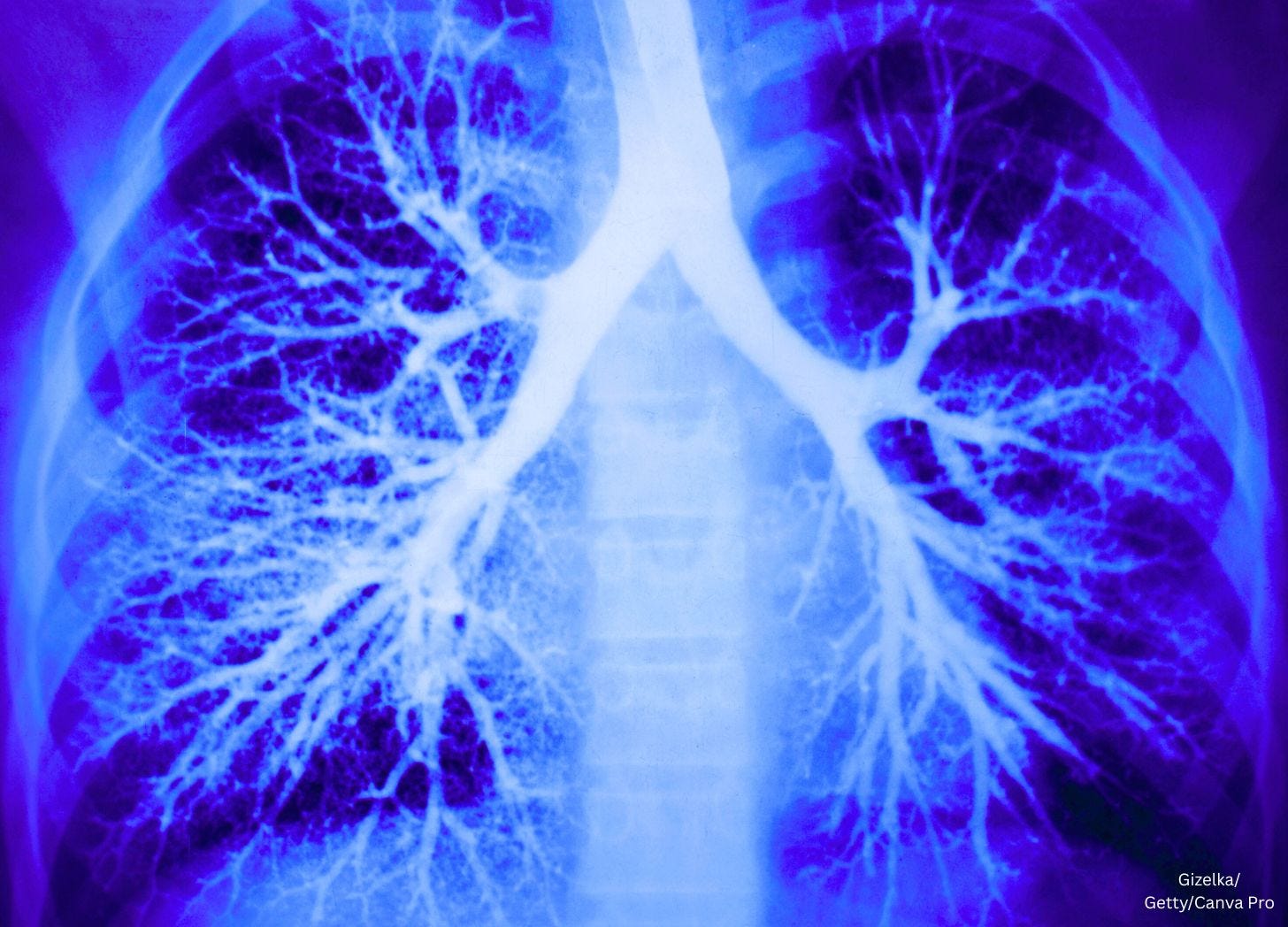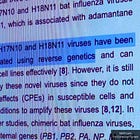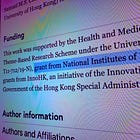NIH Funds Creation of Chimeric H5N1 Virus That Replicates in Human Lung Cells, Resists Tamiflu, and Evolves to Evade Vaccines—Outside BSL-3 Containment
U.S. gov't-funded scientists engineered a live Frankenstein bird flu virus that grows in human lung cells, resists drugs, mutates to evade vaccines, and can be studied outside high-security labs.
Summary:
Scientists say they have built a live hybrid virus with the surface of a current dangerous bird flu and the body of another live virus.
It can infect human lung cells and grow to very high concentrations.
It resists one of the main flu drugs.
It can mutate to dodge immune defenses—just like pandemic strains do in nature.
The work was done in multiple U.S. labs—in Iowa, Louisiana, California, and Georgia—funded by NIH, and can be conducted outside high-security BSL-3 labs.
The Journal of Virology has published a new study describing the creation of what the authors call a “recombinant VSV expressing the hemagglutinin (HA) and neuraminidase (NA) genes of H5N1 IAV (H5N1-VSV)” using “the A/Michigan/90/2024 H5N1 isolate.”
In plain terms, the researchers say they took the outer surface proteins from a current highly pathogenic bird flu virus construct and fused them into a live, replication-competent vesicular stomatitis virus (VSV) backbone.
Follow us on Instagram @realjonfleetwood & Twitter/X @JonMFleetwood.
If you value this reporting, consider upgrading to a paid subscription.
Replicates in Human Lung Cells at Extremely High Titers
The authors report that “H5N1-VSV replicated efficiently in both human lung epithelial cells (A549) and Madin-Darby canine kidney (MDCK) cells, reaching titers of 10⁷–10⁸ PFU/mL.”
This means the engineered virus was able to reproduce in human lung cells at extremely high concentrations, on par with the purported full H5N1 virus.
Keeps H5N1's Dangerous Multibasic Cleavage Site
The study confirms “HA0 was properly cleaved into HA1 and HA2 at the multibasic site.”
The multibasic cleavage site is said to be a hallmark of high-path H5N1 virulence, enabling the virus to infect a wide range of tissues in hosts.
Resistant to Common Antiviral Drug
According to the paper, “both H5N1-VSV and H5N1/Tx24 showed reduced sensitivity [to oseltamivir], with inhibition occurring only at higher concentrations.”
In plain language, the paper claims the chimeric virus displayed reduced susceptibility to Tamiflu, the go-to antiviral for influenza, similar to drug-resistant strains found in nature.
Engineered to Evolve Under Immune Pressure
The authors admit they “passaged H5N1-VSV in MDCK cells in the presence of immune serum” and that “at passage 5, we observed robust H5N1-VSV replication in all five replicates, suggesting the potential emergence of escape variants.”
They found that “four of five independent replicates acquired the A172T mutation… while one had an E142K mutation, both occurring within antigenic site Sa.”
In other words, they’re claiming to have deliberately pushed the virus to mutate in a way that lets it evade immune defenses—and it worked.
Mimics Pandemic Evolution in Cattle
The study states: “continued H5N1 circulation in cattle promotes this drift, increasing the risk of new strains emerging with an altered host range—a scenario with significant public health consequences.”
Put simply, their lab setup recreated the same type of alleged evolutionary shift that could make H5N1 more likely to infect humans.
Allowed Outside of BSL-3 Containment
Perhaps most alarming, the paper concludes that this “platform allows for research outside of BSL-3 conditions.”
That means experiments with this high-replication, immune-escape-capable chimeric H5N1 virus could be done in lower-security labs—increasing the risk of accidental release, as is said to be the cause of the COVID-19 pandemic.
BSL-3 (Biosafety Level 3) is the high-containment standard for work with dangerous, potentially lethal airborne pathogens.
This chimeric H5N1-VSV construct has been intentionally designed so it can be studied under lower-containment conditions (BSL-2), even though it carries key genetic elements from a high-path bird flu strain.
The implications are alarming:
Increased risk of accidental release: BSL-2 labs are far more common, less secure, and less restrictive than BSL-3.
More people handling the virus: Lower containment means more labs and researchers could access and work with it.
Potential for uncontrolled spread: If released, the virus has already been shown to infect human lung cells and reach high titers.
Normalizing high-risk research at lower biosafety levels could set a precedent for more dangerous gain-of-function-style work to be done without top-tier safety measures.
Where the Work Was Done
The paper lists the researchers’ affiliations as:
“Department of Microbiology and Immunology, University of Iowa, Iowa City, Iowa, USA”
“Department of Microbiology and Immunology, Louisiana State University Health Sciences Center-Shreveport, Shreveport, Louisiana, USA”
“Infectious Diseases, J. Craig Venter Institute, La Jolla, California, USA”
“Division of Infectious Diseases and Global Public Health, Department of Medicine, University of California San Diego, La Jolla, California, USA”
“Wertheim School of Public Health and Human Longevity Science, University of California San Diego, La Jolla, California, USA”
“Poultry Diagnostic and Research Center, Department of Population Health, College of Veterinary Medicine, University of Georgia, Athens, Georgia, USA”
Who Paid for It
The authors disclose: “Dr. Balaji Manicassamy is partly supported by the NIAID grant R01AI174584.”
NIAID—the National Institute of Allergy and Infectious Diseases—is part of the U.S. National Institutes of Health (NIH), meaning this gain-of-function-style chimeric H5N1 work was funded by U.S. taxpayers.
The head of NIAID is Dr. Jeanne Marrazzo, and the head of NIH is Dr. Jay Bhattacharya, both of whom serve under the head of Health and Human Services (HHS), Robert F. Kennedy Jr.
Bottom Line:
These researchers created what they refer to as a replication-competent chimeric virus carrying the genetic hallmarks of a highly pathogenic 2024 H5N1 strain.
They taught it to resist antivirals.
They forced it to evolve immune-escape mutations.
And they enabled the work to be done “outside of BSL-3 conditions.”
This is the very type of gain-of-function experimentation global health officials have long warned could spark the next pandemic if accidentally released.
This isn’t a theoretical risk, but a lab-made, high-replication, mammalian-cell-adapted H5N1 hybrid now proven capable of evolving toward vaccine resistance.
It exists in an environment with fewer safety barriers than the law normally demands for such dangerous material.
And it was done with U.S. taxpayer funding at American research institutions.
Follow us on Instagram @realjonfleetwood & Twitter/X @JonMFleetwood.
If you value this reporting, consider upgrading to a paid subscription.
For advertising & sponsorship opportunities reaching 230,000+ monthly viewers, contact us by clicking below.

















Why on earth would you try to make pathogens worse?!? These scientists should be prosecuted. This sounds like a crime against humanity.
Here's who you need to go after about this (the individuals who participated in the study). I keep telling people: APPLY PRESSURE TO THE FOOT SOLDIERS DOING THE DEVIL'S WORK:
boopathi-sownthirarajan@uiowa.edu (find his face here: https://microbiology.medicine.uiowa.edu/profile/postdoctoral-scholars)
Then this witch: Gayathri Loganathan. Look at her previous studies: https://pubmed.ncbi.nlm.nih.gov/?term=Loganathan+G&cauthor_id=40778766
Then this bitch: Arasi Manivasagam, PhD
Assistant Research Scientist, Manicassamy Laboratory
Email: senthamizharasi-manivasagam@uiowa.edu
Then this turd: Rohit K Jangra: https://www.einstein.yu.edu/faculty/13326/rohit-jangra/
And this creep, Gene S. Tan, PhD: https://www.jcvi.org/about/gene-tan
Assistant Professor
(858) 200-1803
gtan@jcvi.org
Then this wank: https://vet.uga.edu/person/daniel-perez/
706-542-5506 office and dperez1@uga.edu
This dork: Balaji Manicassamy: https://microbiology.medicine.uiowa.edu/profile/balaji-manicassamy
balaji-manicassamy@uiowa.edu
Primary Office
3-540C Bowen Science Building (BSB)
51 Newton Road
Iowa City, IA 52242
(319) 335-7590
HERE IS THE LAB IN IOWA FOR THOSE WHO ARE INTERESTED:
3-540 Bowen Science Building (BSB)
51 Newton Road
Iowa City, IA 52242
And Maya Mason: https://pubmed.ncbi.nlm.nih.gov/?term=Mason+M&cauthor_id=40778766
She's in Iowa as well.
Here are the affiliations of the authors of this study. Make note: you can contact all of these departments:
Here are the study authors' affiliations:
1Department of Microbiology and Immunology, University of Iowa, Iowa City, Iowa, USA.
2Department of Microbiology and Immunology, Louisiana State University Health Sciences Center-Shreveport, Shreveport, Louisiana, USA.
3Infectious Diseases, J. Craig Venter Institute, La Jolla, California, USA.
4Division of Infectious Diseases and Global Public Health, Department of Medicine, University of California San Diego, La Jolla, California, USA.
5Wertheim School of Public Health and Human Longevity Science, University of California San Diego, La Jolla, California, USA.
6Poultry Diagnostic and Research Center, Department of Population Health, College of Veterinary Medicine, University of Georgia, Athens, Georgia, USA.